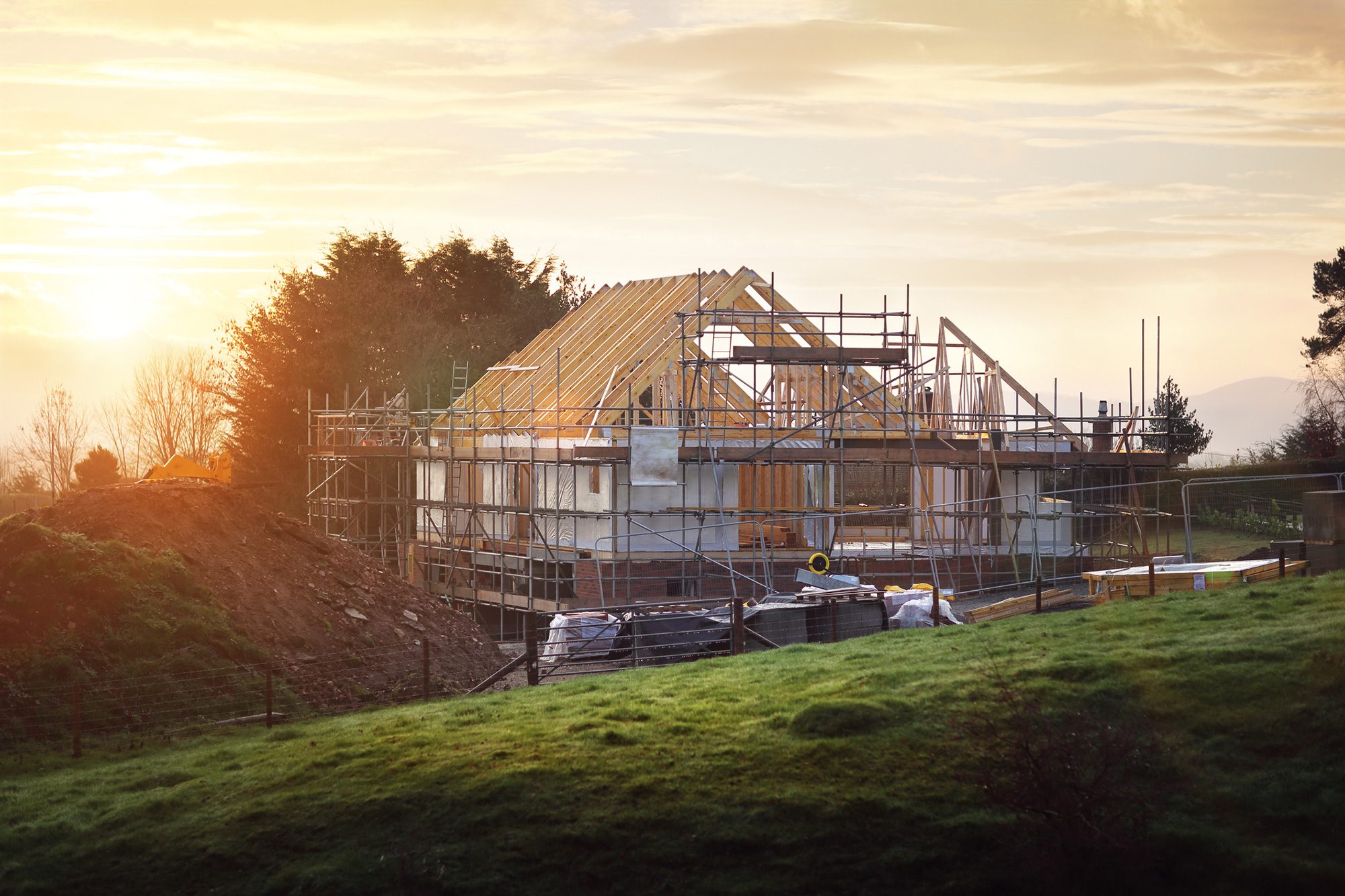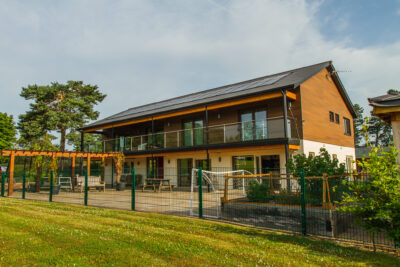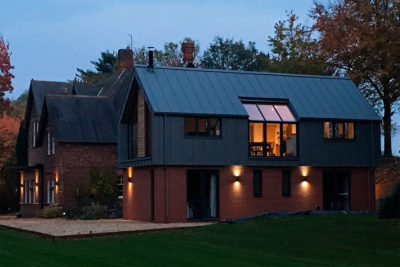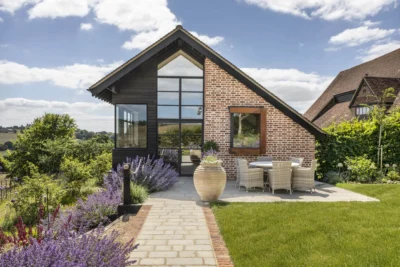There’s a lot to think about when you embark on a self build or major renovation project. It’s only natural that you won’t think of everything that could happen along the way.
Every scheme is unique, so without the gift of second sight, you simply can’t know exactly what will crop up. But you can learn from the mistakes others have made!
To help make your home building journey as smooth as possible, I’ve jotted down some of the things people regularly forget to sort out.
The usual caveat applies in that this isn’t an exhaustive list – but hopefully one or two of them might spark an ‘I never thought of that’ moment and save you some time and effort as you get your project underway in 2019.
1. Clear all the planning conditions
When your consent arrives from the local planning office, there will almost certainly be restrictions attached to it.
All of these planning conditions will need to be addressed, but special attention should always be given to those that have been flagged up as needing to be discharged before any development commences.
These ones will usually be to do with approving your choice of external materials (such as the exact bricks or windows you’ll be using).
2. Allow for hibernating bats
If you have been asked to carry out an ecological survey, it’s important to get the timing right – especially when it comes to these critters.
Bats hibernate from October to April, and during this period there’s no way to watch them flying in and out of their roosts to verify numbers and species. Get it wrong and you’ll add six months to the planning stage of your project.
Read more: Bat Surveys & How to Deal with Bats on Site
3. Check whether there’s anything in the ground
Soil surveys and searches will usually identify the big stuff, but be aware that there can be miscellaneous pipes and cables under the surface that don’t appear on any plans.
It’s because of issues like this that self builders should always set aside a decent contingency budget – typically at least 10% on top of the total construction cost.
4. Let building control know you’re starting on site
You have a legal duty to alert building control 48 hours before you commence any notifiable work. It could be you, your contractor or your project manager who does this – but it needs to be done, so make sure somebody takes responsibility, otherwise you may have to redo work.
5. Provide the right equipment
Don’t assume that all your trades will arrive on site with everything they need.
You should check in with contractors regarding what they will be bringing along themselves and what they will expect you to provide.
Cement mixers, spot boards for mortar and rough terrain fork lift trucks are examples of just a few of the things you might be expected to source.
6. Be prepared for adverse weather
The ideal is to build in spring and summer, when the skies are clear and unlikely to threaten progress.
But in the real world, you might find yourself getting underway in autumn and possibly over winter. Frost and cement don’t go well together, so prepare for cold snaps by providing rolls of hessian to protect fresh mortar from unexpected frost.
And check in advance where you can get your hands on a submersible pump in case you need one to deal with heavy rain after excavating your foundation trenches.
5 Common Heritage Renovation Mistakes
|
7. Protect your stuff
A building site, particularly in the early stages, will have lots of valuable tools and materials around – and this can prove irresistible to any ne’er do wells who spot it.
Hire a security cabin to keep the expensive stuff in overnight. An old shipping container can be a cost-effective option if you want to avoid hire charges.
8. Tell your neighbours what you’re planning to do
You’re taking on a project that will make you part of the community – and it will affect those around you (see my column on Building Works & Neighbour Relationships, an example of what I mean).
So explain to your neighbours what you’re planning, when work will be taking place, how long you expect it to go on for and – importantly – who they can contact if there’s a problem at any time, whether day or night.
9. Work out where the essential services will come from
One of the big unplanned costs can be connection to the essential utilities. Never assume that you can tap into electricity, water and mains drainage just because next door has them.
You need to speak to service suppliers early on (ideally before you offer on a plot) to determine how you can access utilities, how long the process will take and how much connections are likely to cost.
10. Make your site safe
Building sites can be dangerous places, so it’s important to safeguard yourself and others. Protective clothing is very cheap and is the last line of defence in preventing injury or worse.
You can buy a hard hat, steel toe-capped wellies, goggles, ear defenders and a hi-vis vest for just £32 all-in from Screwfix.
So buy a set for the sake of your own safety, and insist that others (operatives and visitors) wear the right protective clothing on site, too.
11. Order enough materials
You might think that you’ll save money by ordering just enough bricks or tiles to meet the exact m2 requirements of your project – but you’d be wrong.
This is a false economy. There will always be cuts to make and breakages on site, and purchasing another pallet load at this point will cost you a bomb in terms of the transport charges.
Always over-order on bricks and tiles by at least 10% (or 15% for reclaimed items).
12. Submit CIL Form 6 before work gets started
This is an important one. If your self build project qualifies for an exemption from the Community Infrastructure Levy (CIL) development tax, there are four steps to take.
At the planning stages, you first have to assume liability and then submit Part 1 of Form 7 to claim your exemption.
The next step is the one that many people forget: before you start work on site, you must notify your local authority by submitting Form 6 (Notification of the Commencement of Work).
If you don’t, the full CIL charge will become due. When you’ve finished the scheme, you must submit Part 2 of Form 7 within six months of completion.
13. Future proof your project
If you’re self building, you have a great opportunity to create a home that can be as tailored to your lifestyle now as it is in 10 years’ time.
A good example is the roof space. If there’s potential to expand into this at some future date, then think about where the stairs could go to make this happen.
You will need 2m of headroom above the pitch line of the stairs (1.9m is acceptable in some instances but will feel a bit cramped).
Read more: Complete Guide to Loft Conversion Projects
14. Put in enough power sockets
It’s pretty cheap to put in a double power socket during first fix work, but it’s expensive and disruptive to retrofit one after completion. Think hard about where they should go and if in doubt, put one in.
Read more: Planning a Lighting Scheme & Cost Guide
15. Get power outside
Think about what electrical fixtures and fittings you’re going to have outside, and lay armoured cables to feed them.
Garages, sheds, electric gates, ponds, patios and garden lighting are common examples. Again, it’s relatively inexpensive to put these in at the early stages but a real pain if you subsequently need to dig up newly laid drives and pathways to install power.


































































































 Login/register to save Article for later
Login/register to save Article for later












